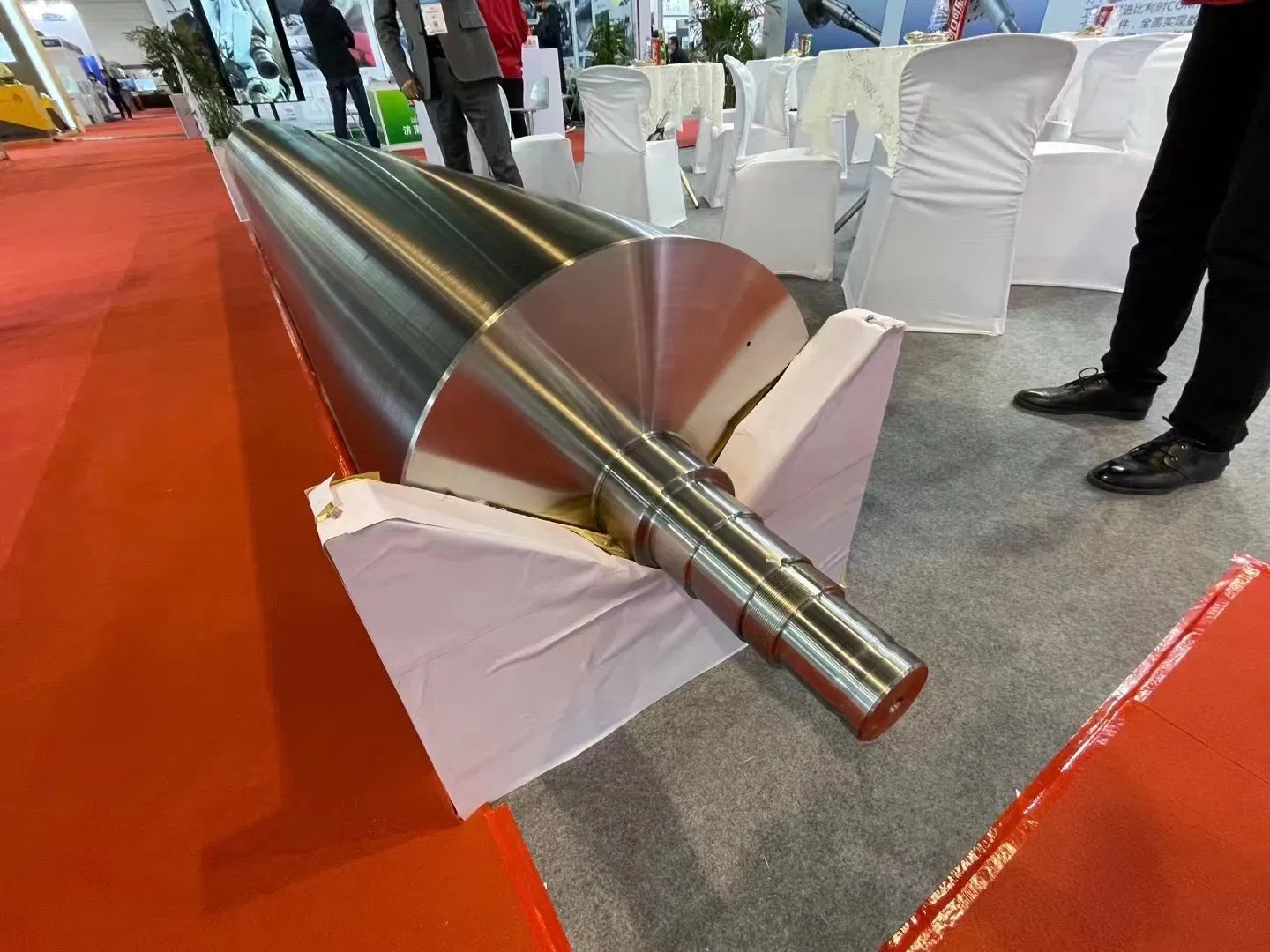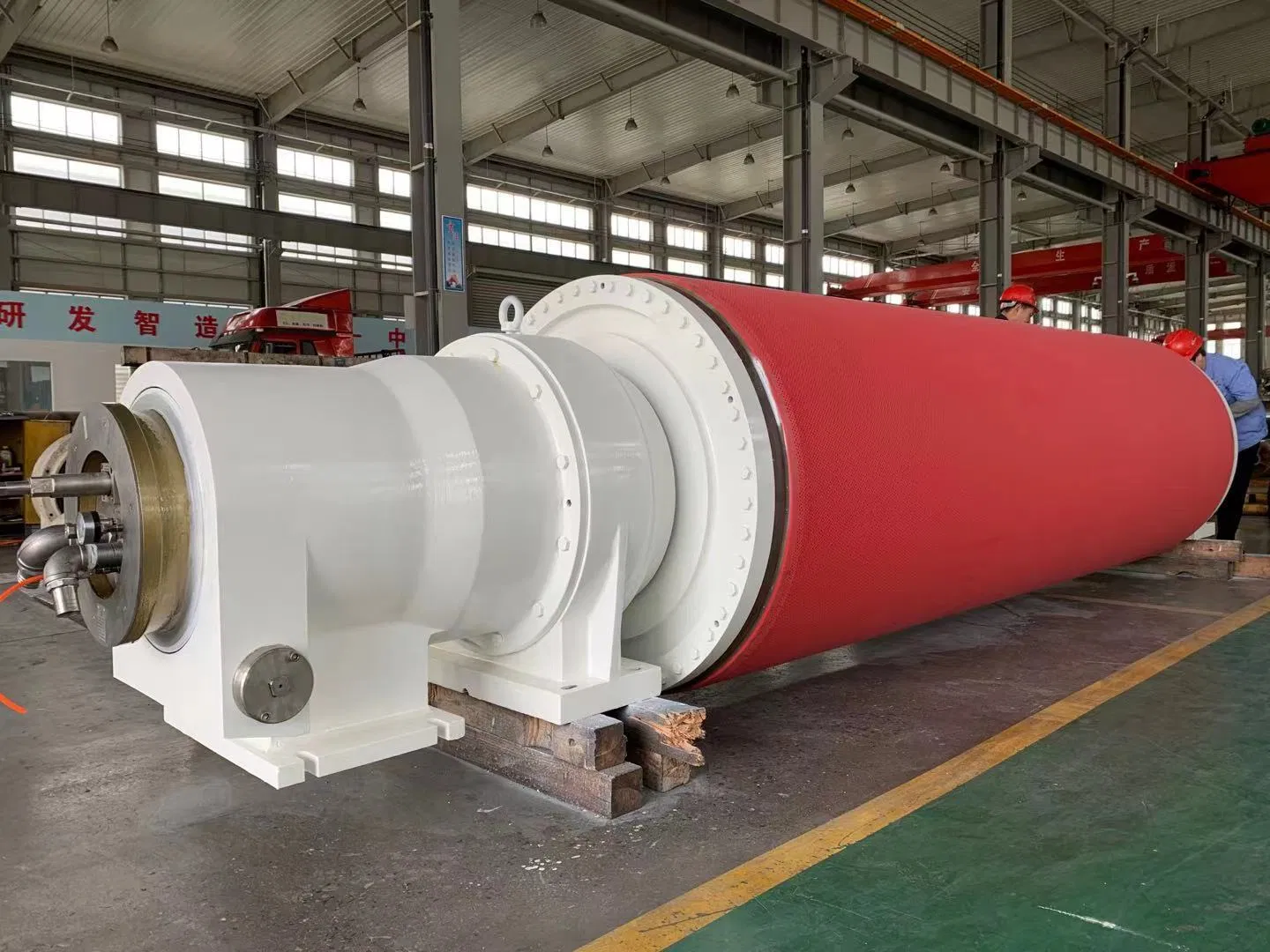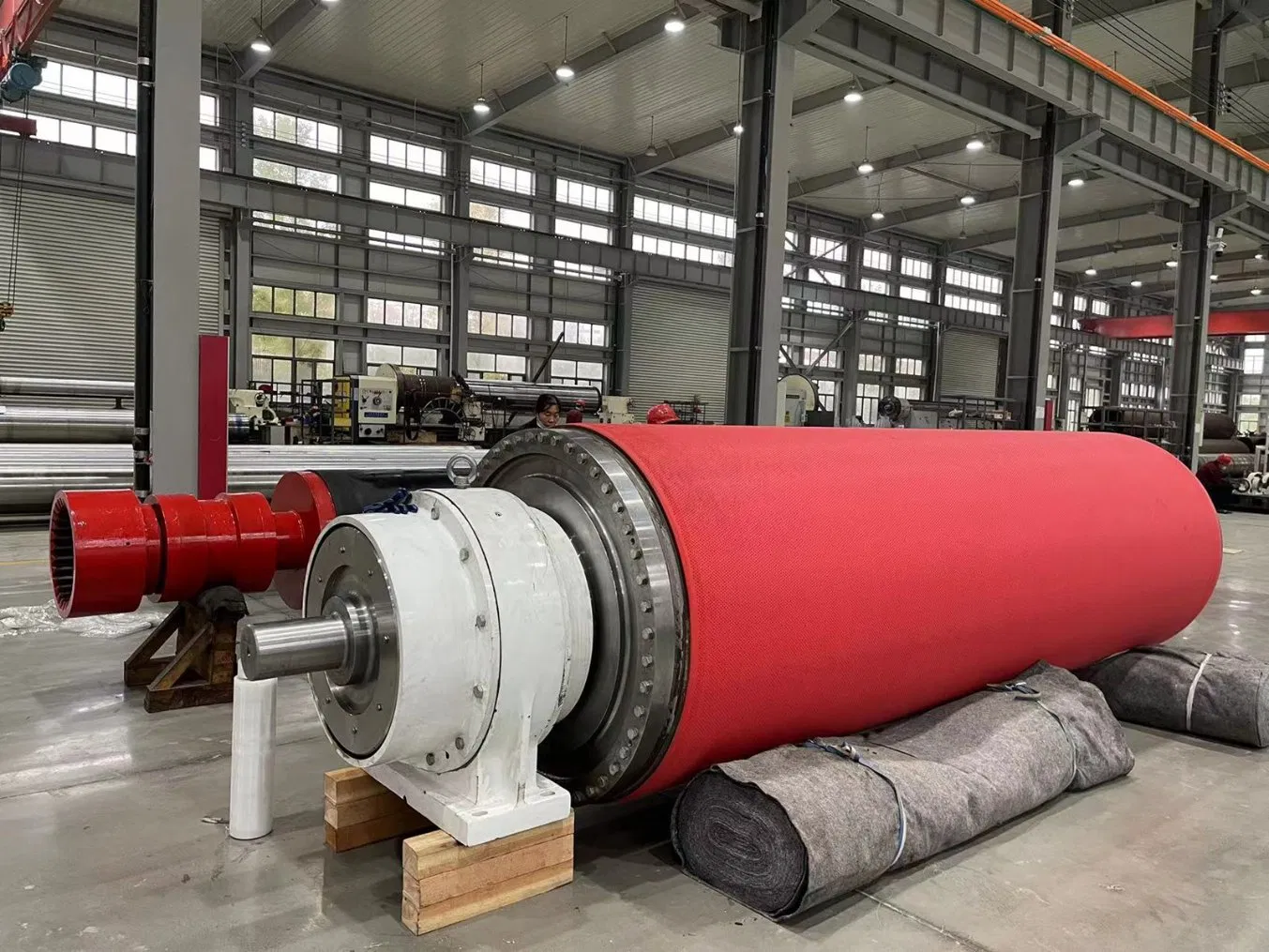In our increasingly digital world, it's easy to overlook the enduring importance of paper. From packaging and hygiene products to books and fine art, paper remains an indispensable material. But have you ever stopped to consider the intricate process behind its creation? It's a marvel of engineering, relying heavily on massive, precisely crafted components known as paper machine rolls. And behind every sheet of paper, there's a dedicated Paper machine roll manufacturer, working tirelessly to ensure the smooth, efficient operation of paper mills worldwide.
Frankly speaking, these manufacturers are the unsung heroes of the papermaking industry. They design, produce, and often maintain the critical rolls that guide, press, and dry the paper web at incredible speeds. Without their expertise and the quality of their products, modern papermaking simply wouldn't be possible. This article will delve deep into the world of these specialized manufacturers, exploring the types of rolls they produce, the complexities of their craft, the innovations driving the industry forward, and what to look for when choosing a reliable partner.
The Critical Role of a Paper Machine Roll Manufacturer
The journey from wood pulp to finished paper is a fascinating one, involving multiple stages of dewatering, pressing, and drying. Each stage requires specialized rolls, engineered to perform specific functions under demanding conditions. Think about it: a paper machine can be hundreds of meters long, operating 24/7, with rolls rotating at thousands of revolutions per minute, often in hot, humid, or chemically aggressive environments. This isn't just about spinning cylinders; it's about precision, durability, and performance.
A leading Paper machine roll manufacturer isn't just a supplier; they are a strategic partner to paper mills. Their products directly impact a mill's efficiency, product quality, and operational costs. A well-designed and manufactured roll can reduce energy consumption, minimize downtime, and extend maintenance cycles. Conversely, a poorly made roll can lead to costly breakdowns, uneven paper quality, and significant production losses. It's a high-stakes game where precision and reliability are paramount.
A Deep Dive into the Diverse World of Paper Machine Rolls
The sheer variety of rolls within a paper machine is astounding, each with its unique design and purpose. Understanding these different types is key to appreciating the complexity faced by any Paper machine roll manufacturer.
Forming Section Rolls: The Foundation
In the forming section, the diluted pulp slurry begins its transformation into a continuous sheet. Key rolls here include:
- Breast Rolls: Located at the very beginning, they support the forming fabric and help distribute the pulp slurry evenly.
- Wire Rolls: These support the forming fabric as water drains from the pulp.
- Couch Rolls: Positioned at the end of the forming section, they help remove the initial bulk of water by suction, preparing the sheet for the press section.
The accuracy of these rolls is crucial for uniform sheet formation, which directly impacts the final paper quality. Any slight imperfection can lead to unevenness or weak spots.
Press Section Rolls: Squeezing for Efficiency
After the forming section, the sheet still contains a significant amount of water. The press section uses mechanical pressure to remove more water, significantly increasing the sheet's dry content before it enters the energy-intensive dryer section. This is where the importance of precision paper machine rolls truly shines.
- Suction Press Rolls: These rolls have a drilled shell and an internal suction box that pulls water out of the sheet as it passes through the nip.
- Blind-Drilled Rolls: Similar to suction rolls but without the internal suction box, relying solely on the nip pressure and the holes to collect water.
- Grooved Rolls: Featuring circumferential grooves, these rolls provide channels for water to escape under pressure.
The covers on these rolls, often made of rubber or polyurethane, are critical for optimal dewatering and sheet release. Their hardness, elasticity, and surface texture are meticulously controlled by the manufacturer.
Dryer Section Rolls: Heat and Humidity Management
The dryer section is where the remaining water is evaporated using heat. This section consists of numerous large-diameter rolls, often steam-heated.
- Dryer Cans: These are large, hollow, cast iron or steel cylinders heated internally by steam. The paper web wraps around them, transferring heat and evaporating water.
- Guide Rolls: These non-heated rolls ensure the web travels smoothly through the dryer section, maintaining tension and alignment.
Maintaining uniform temperature across the face of these rolls is paramount for consistent drying and preventing sheet breaks. Interestingly enough, the internal design for steam distribution is as critical as the external surface.
Calender and Reel Section Rolls: Finishing Touches
Once dried, the paper often goes through a calender stack to enhance its surface properties, such as smoothness, gloss, and thickness. Finally, it's wound onto a reel.
- Calender Rolls: These are highly polished, hard rolls that apply pressure to the paper, compacting and smoothing its surface. They can be hard nip (steel on steel) or soft nip (steel on polymer-covered rolls).
- Reel Spools/Reel Drums: These large, robust rolls are responsible for winding the finished paper into jumbo rolls, often weighing many tons.
The surface finish and dynamic balance of calender rolls are incredibly precise, directly impacting the final paper's aesthetic and functional qualities.

The Art and Science Behind Manufacturing Paper Machine Rolls
Producing these critical components is a complex blend of metallurgy, precision engineering, and specialized coatings. It's a testament to the capabilities of a modern Paper machine roll manufacturer.
Material Selection: The Foundation of Durability
The choice of material is fundamental to a roll's performance and lifespan. Common materials include high-grade steel, cast iron, and composite materials like carbon fiber. Each material is selected based on the roll's function, the stresses it will endure, and the operating environment. For instance, rolls in corrosive environments might require stainless steel or specialized coatings, while those needing high stiffness might use composite structures. I've found that the best manufacturers invest heavily in material science research.
Precision Machining: Crafting Perfection
Once the raw material is selected, the manufacturing process involves several highly precise steps:
- Casting/Forging: Creating the basic roll body.
- Rough Machining: Shaping the roll close to its final dimensions.
- Thermal Treatment: Enhancing material properties like hardness and stress relief.
- Fine Machining and Grinding: This is where the magic happens. Rolls are ground to extremely tight tolerances, often measured in microns, to ensure perfect cylindricality and surface finish.
- Dynamic Balancing: Given the high rotational speeds, rolls must be perfectly balanced to prevent vibrations, which can lead to sheet breaks, bearing damage, and poor paper quality. This is a critical step in custom paper mill roll fabrication.
- Surface Finishing: Polishing, chrome plating, or other specialized finishes are applied to achieve the desired surface properties.
To be honest, the level of precision required is astounding. A slight imbalance or an imperceptible surface imperfection can have catastrophic consequences in a high-speed paper machine.
Advanced Coatings and Coverings: Enhancing Performance
Many rolls are covered with specialized materials to optimize their performance. These covers can be made from:
- Rubber: Offers elasticity, good nip characteristics, and wear resistance. Different rubber compounds are used for various applications.
- Polyurethane: Known for its superior abrasion resistance, chemical resistance, and load-bearing capabilities, often used in press and calender applications.
- Ceramic Coatings: Applied for extreme wear resistance, hardness, and corrosion protection, particularly in harsh environments.
- Composite Covers: Lightweight and strong, offering excellent dynamic properties.
The application of these covers is an art in itself, requiring specialized equipment and expertise to ensure perfect adhesion and uniform thickness. Many experts agree that the right cover can significantly extend roll life and improve paper quality.

Innovations and Challenges Facing Paper Machine Roll Manufacturers
The paper industry is constantly evolving, driven by demands for higher efficiency, better quality, and increased sustainability. This puts continuous pressure on the Paper machine roll manufacturer to innovate.
Sustainability and Energy Efficiency
With rising energy costs and environmental concerns, there's a strong push for more energy-efficient rolls. This includes developing lightweight designs that reduce rotational inertia, new coating technologies that lower friction, and improved dewatering capabilities in press rolls to reduce the energy needed in the dryer section. It's worth noting that even small improvements in efficiency across hundreds of rolls can lead to significant energy savings for a mill.
Smart Rolls and Predictive Maintenance
The advent of Industry 4.0 and the Internet of Things (IoT) is transforming roll manufacturing. Modern rolls are increasingly equipped with embedded sensors that monitor temperature, vibration, pressure, and even internal stresses in real-time. This data can be used for:
- Predictive Maintenance: Identifying potential issues before they lead to breakdowns, allowing for scheduled maintenance rather than costly emergency repairs.
- Optimized Performance: Adjusting operating parameters in real-time to maximize efficiency and paper quality.
- Extended Lifespan: Understanding how rolls are performing under load helps in optimizing their design and maintenance schedules.
This shift towards "smart rolls" represents a significant leap forward in operational intelligence for paper mills.
Overcoming Operational Demands
Paper machines are running faster than ever, processing a wider range of pulp types, and often facing more aggressive chemical environments. This demands rolls that are:
- More Robust: Capable of withstanding higher speeds, greater loads, and increased wear.
- Corrosion Resistant: Especially important in recycled paper mills where contaminants can be harsh.
- Dimensionally Stable: Maintaining precise dimensions even under extreme temperature fluctuations.
The ongoing challenge for manufacturers is to balance these demands with cost-effectiveness and ease of maintenance.

Choosing the Right Paper Machine Roll Manufacturer: A Strategic Decision
For any paper mill, selecting the right Paper machine roll manufacturer is a critical strategic decision. It's not just about buying a product; it's about establishing a long-term partnership that ensures operational excellence.
Experience and Reputation
Look for manufacturers with a proven track record in the industry. How long have they been in business? Do they have a strong reputation for quality and reliability? Client testimonials and case studies can provide valuable insights. A manufacturer with decades of experience likely understands the nuances of various paper machine types and operational challenges.
Technological Capability and R&D
Does the manufacturer utilize state-of-the-art machinery for precision grinding, balancing, and coating? Do they invest in research and development to bring new materials, coatings, and smart technologies to market? A forward-thinking manufacturer will be able to offer innovative solutions that improve your mill's performance.
Quality Control and After-Sales Support
Robust quality control processes are non-negotiable. Ask about their certifications (e.g., ISO standards) and their inspection procedures at every stage of manufacturing. Equally important is their after-sales support, including installation assistance, troubleshooting, and crucially, industrial roll repair services. A manufacturer that can repair and recondition rolls extends their lifespan and provides significant cost savings.
Customization and Flexibility
Every paper machine is unique, and sometimes standard rolls just won't cut it. Can the manufacturer provide custom-engineered solutions tailored to your specific machine, pulp type, and operational goals? Their ability to adapt and innovate for your unique needs is a huge advantage.
In my experience, the best manufacturers offer not just products, but solutions. They work collaboratively with mills to understand their challenges and provide comprehensive support throughout the roll's lifecycle.
The Future of Paper Machine Rolls and Their Manufacturers
The paper industry, while mature, is far from static. The demand for sustainable packaging, tissue products, and specialized papers continues to drive innovation. Consequently, the role of the Paper machine roll manufacturer will only become more sophisticated.
We can expect to see continued advancements in material science, leading to lighter, stronger, and more durable rolls. The integration of smart technologies will become standard, enabling unprecedented levels of monitoring and predictive maintenance. Automation in manufacturing processes will further enhance precision and efficiency.
Ultimately, these manufacturers are more than just suppliers; they are integral partners in the global effort to produce paper efficiently, sustainably, and to the highest quality standards. Their ongoing innovation ensures that the heartbeat of the paper machine continues to beat strong, supporting an industry that remains vital to our daily lives. What role do you think advanced robotics will play in the future of roll manufacturing?
For more detailed information, please visit our official website:Paper machine roll manufacturer
About the author: Dr. Evelyn Reed is a seasoned industrial engineer with over two decades of experience in the heavy machinery and manufacturing sectors, specializing in pulp and paper technology. Her work focuses on optimizing operational efficiency and material science applications in high-stress environments. She frequently consults on advanced manufacturing techniques and sustainable practices within the paper industry, making her an authority on critical components like paper machine rolls.


